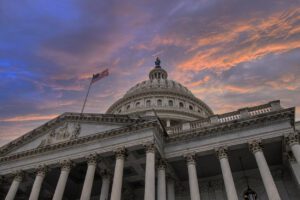At the end of August, President Biden made a huge announcement: federal loan borrowers that earn less than $125,000 per year ($250,000 for married couples) could qualify for between $10,000 and $20,000 in loan forgiveness — with no restrictions on employment.
But student loan forgiveness was only one of the announcements; the Biden Administration also introduced a new income-driven repayment (IDR) plan that could significantly reduce payments for borrowers. And some measures make staying on the plan easier than it’s been with other IDR plans in the past.
All of the details aren’t available yet, but here’s what we know so far about Biden’s new IDR plan and how it will affect borrowers.
How Income-Driven Repayment (IDR) Plans Work Now
For federal loan borrowers, IDR plans can be incredibly helpful. There are currently four IDR options:
- Income-Based Repayment
- Income-Contingent Repayment
- Pay As You Earn
- Revised Pay As You Earn
Under an IDR plan, your repayment term is extended to 20 to 25 years rather than the 10-year term of a Standard Repayment Plan.
IDR plans base your payments on a percentage of your discretionary income —- for IBR, PAYE, and REPAYE, your discretionary income is the difference between your income and 150% of the poverty guideline for your state and family size. For ICR, it’s the difference between your income and 100% of the poverty guideline.
Depending on your plan, your payment may be 10% to 20% of your discretionary income.
Biden’s Income-Driven Repayment Proposal: 6 Key Changes
Under President Biden’s new student loan forgiveness initiative, federal loan borrowers that earn less than $125,000 per year ($250,000 for married couples) would automatically qualify for up to $10,000. Federal loan borrowers that had received Pell Grants would receive up to $20,000 in loan forgiveness.
However, President Biden also proposed a new income-driven repayment plan that could provide even more long-term relief for qualifying borrowers. This plan — different from the four other types in existence now — would make the following changes:
- Waives payments for low-income workers: Borrowers that make under 225% of the federal poverty guideline — $30,577.50 for a single person — wouldn’t have to make a payment toward their loans.
| Family Size | 2022 Poverty Guideline | 150% of the Poverty Guideline** | 225% of the Poverty Guideline** |
|---|---|---|---|
| 1 | $13,590 | $20,385 | $30,578 |
| 2 | $18,310 | $27,465 | $41,198 |
| 3 | $23,030 | $34,545 | $51,818 |
| 4 | $27,750 | $41,625 | $62,438 |
| 5 | $32,470 | $48,705 | $73,058 |
| 6 | $37,190 | $55,785 | $83,678 |
| 7 | $41,910 | $62,865 | $94,298 |
| 8* | $46,630 | $69,945 | $104,918 |
| *To calculate the poverty guideline for families or households with more than eight persons, add $4,720 for each additional person.
**Amounts rounded to the nearest full dollar | |||
- Raises discretionary income: Rather than using 100% or 150% of the poverty guideline to determine your discretionary income, the new IDR plan would use 225% of the poverty guideline. For a single person living in the 48 contiguous states or the District of Columbia, it would look at the difference between your income and $30,577.50.
- Lowers cap on payments: The new plan would slash payments to just 5% of the borrower’s discretionary income.
- Provides loan forgiveness sooner: Borrowers that owe $12,000 or less could qualify for loan forgiveness in just ten years. The earliest borrowers can qualify for a loan discharge under an IDR plan is 20 years.
- Covers unpaid interest: Under the terms of the new IDR plan, the government would cover the unpaid monthly interest on borrowers’ loans, so your balance wouldn’t grow as long as you made your payments on time.
- Simplifies annual recertification: When borrowers participate in IDR plans, they must recertify their income yearly. But the Biden administration announced that the Department of Education would automatically pull that information starting in the summer of 2023, eliminating the new to recertify income.
Tip: Thanks to the American Rescue Act, student loan forgiveness isn’t taxable at the federal level until 2025.
What Does the New IDR Plan Mean for Borrowers?
The new IDR plan could provide substantial relief for qualifying borrowers with federal student loans. How much relief? Consider these three examples.*
*The below examples assume the borrowers are single without any dependents and live in the 48 contiguous states or the District of Columbia. The listed incomes are based on the median annual salaries for their professions using data from the U.S. Bureau of Labor Statistics.
For the sake of comparison, the borrowers in these examples all have $30,000 in federal Direct unsubsidized loans at 4.99%. Under a 10-year standard repayment plan, the regular monthly payment would be $318.05. These examples assume that the borrowers enrolled in Income-Based Repayment.
| Salary | Monthly Payment Under Income-Based Repayment | Monthly Payment Under Biden’s New IDR Plan | Savings on New Plan Relative to Standard Repayment | |
| Christine: A Childcare Provider | $27,490 | $59.20 | $0 | $318.05 |
| Tony: A Private School Teacher | $46,520 | $217.79 | $66.42 | $251.63 |
| Molly: A Mechanical Engineer | $95,300 | Not eligible; pays $318.50 under a standard repayment plan | $269.68 | $48.79 |
Christine: A childcare provider that makes $27,490 per year
Christine is a childcare provider in North Carolina and earns $27,490 per year. IBR uses the difference between a borrower’s income and 150% of the poverty guideline to calculate discretionary income.
For a single person, 150% of the poverty guideline is $20,385, so Christine’s discretionary income is $7,105.
Under IBR, borrowers’ payments are 10% of their discretionary income or $710.50 per year in Christine’s case. If they were split up over 12 months, Christine’s payments would be $59.20 per month.
The new plan uses 225% of the poverty guideline, and 225% of $13,590 is $30,577.50.
The new plan states that borrowers that earn under 225% of the poverty guidelines don’t have to make payments. Christine’s income is approximately $3,000 under that number, so she doesn’t have to make any payments at all.
Tony: A private school teacher that earns $46,520 per year
Tony works as a middle school teacher at a private school in Delaware, and he earns $46,520 per year.
Tony is enrolled in an IBR plan, which uses 10% of his discretionary income to determine his payments. In Tony’s case, his discretionary income is $26,135, so he pays $2,613.50 per year, or $217.79 per month, toward his loans.
The new plan uses 225% of the poverty guideline — $30,577.50 — so his new discretionary income total is $15,942.50. The new IDR plan’s payments are 5% of that number; Tony would pay $797.13 per year or $66.42 per month.
Molly: A mechanical engineer that earns $95,300
Molly is a mechanical engineer in California that earns $95,300 per year. She attempted to enroll in an IBR plan, but 10% of her discretionary income would result in a monthly payment of $538.52 — a higher amount than she’d pay under a 10-year Standard Repayment Plan.
However, she could reduce her payment with the new IDR plan. Her discretionary income would be $64,722.50. The new plan bases payments on 5% of the discretionary income, so Molly would pay $3,236.13 per year or $269.68 per month. Compared to the payment under a 10-year Standard Repayment Plan, Molly would save $48.37.
What’s Next?
Understandably, borrowers are excited about the new loan forgiveness program and IDR plan. The Biden Administration said the new IDR plan may go into effect in January 2023, but more information isn’t available yet about what the enrollment process will entail. The administration is also working on finalizing other details, so there may be changes regarding income restrictions or loan amounts.
Details and information on how to enroll aren’t yet available. But you can sign up for email updates from the U.S. Department of Education to receive the latest news.



